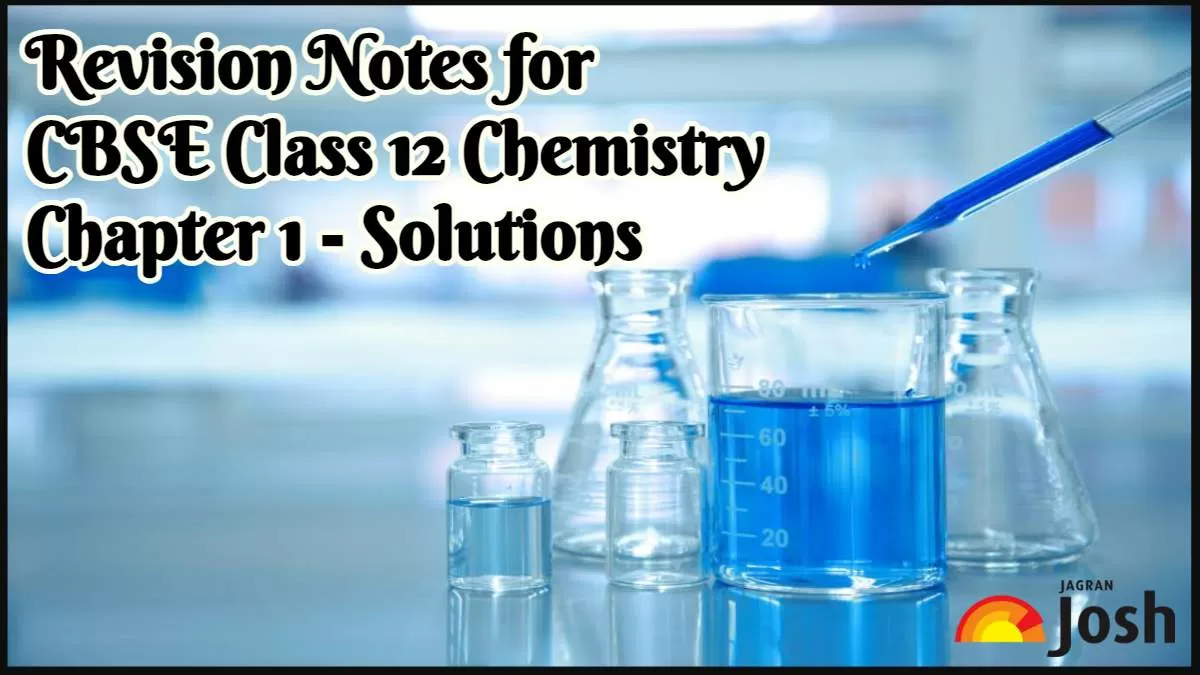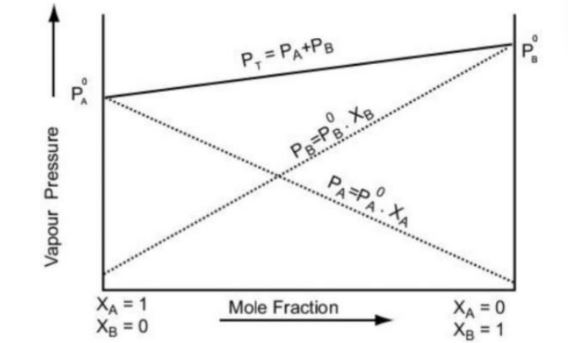Solution Class 12 Revision Notes: Revision notes come to be very useful at the time of exams to cover the huge syllabus in a consolidated form. Therefore, it’s essential for students to keep good and reliable revision notes with them for effective and quick revision before the exam. To help students with the same, we have provided here the revision or short notes for CBSE Class 12 Chemistry Chapter 1, Solutions. The notes have been prepared according to the new CBSE syllabus and cover all the important concepts of the chapter. So, students would find these short notes quite helpful to revise the chapter quickly to save their time for the practice of important questions and previous years' question papers. You can download the notes in PDF as well.
Also Read: CBSE Class 12 Chemistry Syllabus 2023-24
Revision Notes for CBSE Class 12 Chemistry Chapter 1, Solutions
Introduction
A solution is a homogeneous mixture of two or more substances. The substance present in greater amount is called the solvent, and the one present in the smaller amount is called the solute.
Types of solutions
Solutions can be divided into three types:
Solid solutions: In these, both the solute and solvent are solids.
Example: an alloy of gold and silver
Liquid solutions: These are solutions in which both the solute and solvent are in liquid state.
Example: a solution of salt in water
Gaseous solutions: Here, both the solute and solvent are in gaseous state.
Example: air is a gaseous solution of nitrogen, oxygen, and other gases.
Concentration of solutions
It is a measure of the amount of solute dissolved in given amount of solvent.
Concentration can be expressed in following ways:
Mass by volume percentage (w/v): Mass of the solute dissolved in 100 mL of solution.
Molality (m): It is the number of moles of solute present in 1kg of solvent.
Molarity (M): It is the number of moles of solute present in 1L of solution.
Normality: It is the number of gram equivalent of solute dissolved per litre of solution.
Mass percentage (w/w): This is the mass of solute divided by the mass of the solution, expressed as a percentage.
Volume percentage (v/v): This is the volume of solute divided by the volume of the solution, expressed as a percentage.
Mole fraction: Number of moles of the solute divided by the moles of the solution, expressed as a percentage.
Saturated solution: It is a solution in which no more solute can be dissolved at the same temperature and pressure.
Solubility
It is the maximum amount of solute that can be dissolved in a given amount of solvent at a given temperature. It depends on a number of factors, including the nature of the solute and solvent, the temperature, and the pressure.
Henry's law
Henry's law states that the solubility of a gas in a liquid is directly proportional to the partial pressure of the gas above the liquid. Hence, with increase in pressure the solubility of gas in liquid will increase.
i.e., p = KHx
Where p is the partial pressure of the gas; and x is the mole fraction of the gas in the solution and
KH is Henry‘s Law constant.
Liquid in Liquid solution:
Vapour Pressure: The pressure developed above the liquid at particular temperature at the equilibrium point.
Raoult’s Law: In solution of volatile liquids, the partial vapour pressure of each component is directly proportional to its mole fraction.
pA = p0A χA ,
pB = p0B χB ,
Total pressure pT = pA + pB
Ideal Solution: It is the liquid-liquid solution which obeys Raoult’s law at all concentrations.
Forces of attraction between A-A, B-B is similar to A-B
ptotal = pA + pB,
ΔHmix =0; ΔVmix = 0.
Non-Ideal Solution: It is the liquid-liquid solution which does not obey Raoult’s law. It shows positive or negative deviations from Raoult’s law.
Azeotrope: The mixture of liquids which boils at constant temperature like pure liquid and has same composition of component in liquid as well as vapour phase.
Types of azeotropes:
(i) Minimum boiling azeotrope: The solutions which show a large positive deviation from Raoult’s law form minimum boiling azeotrope.
Example: ethanol-water mixture
(ii) Maximum boiling azeotrope: The solutions that show large negative deviation from Raoult’s law form maximum boiling azeotrope at a specific composition.
Example: Nitric acid and water mixture.
Colligative properties
These are the properties of solutions which depend on the number of solute particles dissolved in the solution, but not on the identity of the solute particles. These include:
Relative lowering of vapour pressure: It refers to the decreased number of solvent molecules escaping into vapour phase resulting in a decrease in the pressure exerted by the vapour phase.The relative lowering of vapour pressure of a solution is equal to the mole fraction of the solute.
Elevation of boiling point: It refers to the increase in the boiling point of a solvent upon the addition of a solute.
Depression of freezing point: It is the decrease of the freezing point of a solvent on addition of a non-volatile solute.
Osmotic pressure: It is the minimum pressure applied to a solution to stop the flow of solvent molecules through a semipermeable membrane.
Isotonic solutions: Two solutions having same osmotic pressure at a given temperature are called isotonic solutions.
Reverse osmosis: If the pressure applied on the solution side is more than osmotic pressure of the solution then the solvent particles will move from solution to solvent side. This process is termed as reverse osmosis.
Hypertonic solution: It is a solution having a higher concentration of solutes on the outside of a cell.
Hypotonic solution: It is a solution having a lesser concentration of solute inside as compared to outside the cell.
Abnormal molecular mass: It is the molar mass that is either lower or higher than the expected or
normal value.
Van't Hoff factor (i): It is the ratio of the total number of moles of particles after dissolution to the number of moles of particles before dissolution.
Dissociation leads to an increase in the number of solute particles in the solution resulting in an increase in the value of colligative property.

